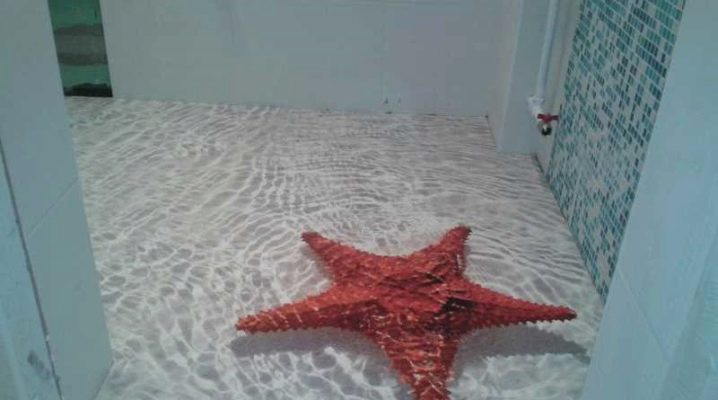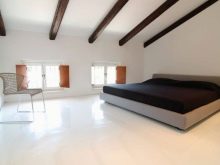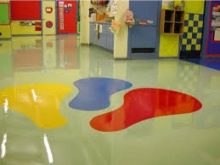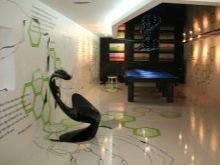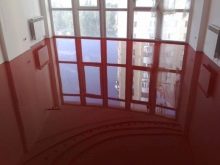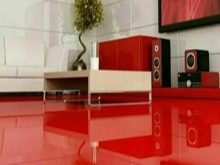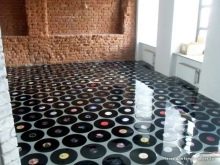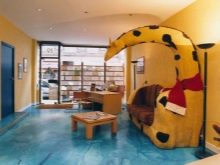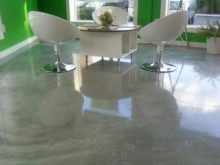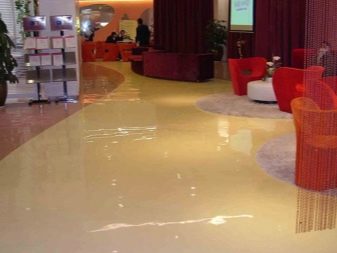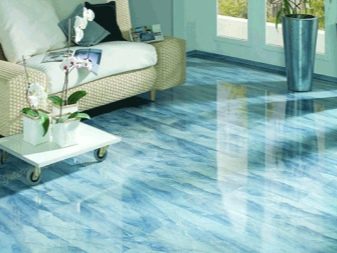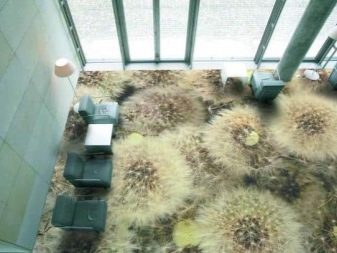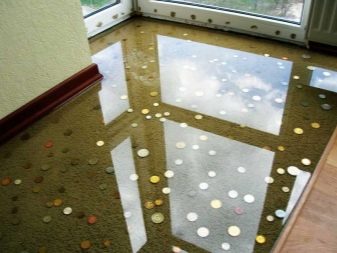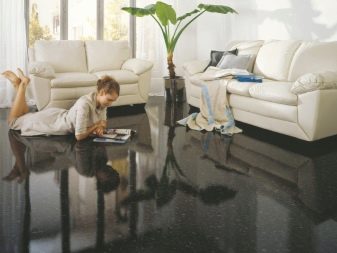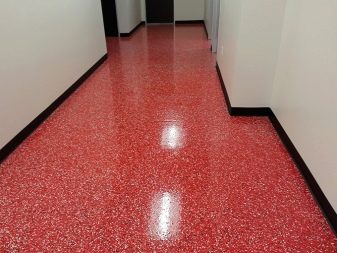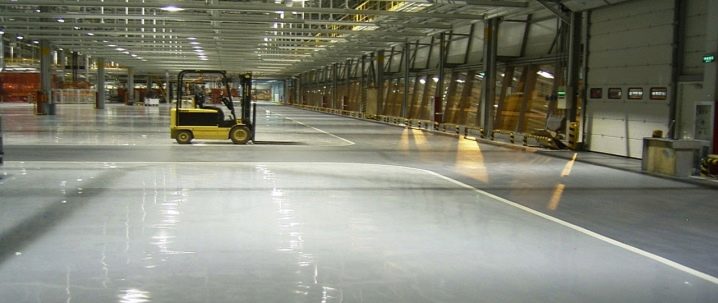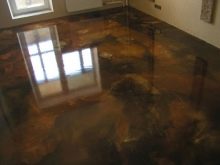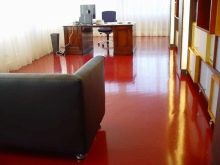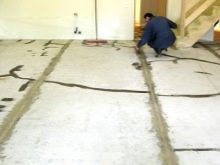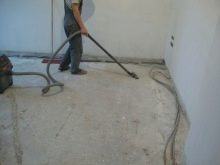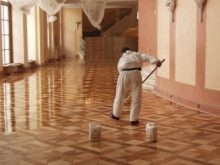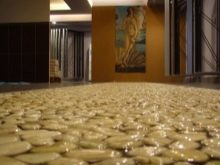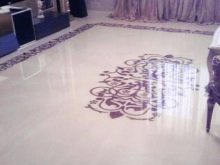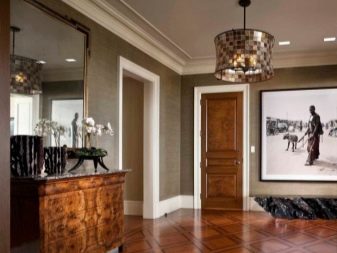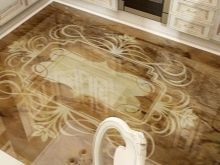Features of polyurethane floors
The floor is an important part of any industrial and residential building. Today there are special requirements for these surfaces. To improve the quality of the floor and increase its service life, use a variety of materials. Particular attention should be paid to polymers that perfectly withstand physical and thermal stress. Before you form such a base, you should know the features of polyurethane floors. This will allow you to choose the best coverage option for a wide range of tasks.
Special features
Polyurethane floors are a seamless coating based on several types of polymers. Get them with the help of special chemical reactions, allowing to synthesize a mass with certain technical parameters. Such surfaces have gained immense popularity,as they are characterized by minimal shrinkage and high strength.
Polyurethane floors can be found in several places:
- industrial workshops and warehouses;
- entertainment and shopping centers;
- hospitals;
- freezers;
- car parks, garages and many others.
Polyurethane floor is a multilayer material and consists of the following elements:
- The bottom layer is represented by special impregnation. Substance has the minimum viscosity and uniform composition. This allows him to qualitatively cling to materials such as concrete, wood or ceramics.
- The middle layer consists of a two-component coating based on polyurethane. The elasticity of this substance is already much higher than the previous component. The material also has high adhesion rates. This layer has high firming properties. The durability of the foundation depends on it.
- The top layer contains substances that are characterized by anti-corrosion, durability and resistance to mechanical and chemical effects.
Some varieties of polyurethane floors can self-level.
This is achieved through special components that improve the viscosity and fluidity of the mixture. Some manufacturers add to the quartz sand, which increases the strength of the material. Such products are among the most durable, therefore, are very popular.
Advantages and disadvantages
The polyurethane floor is characterized by a complex structure, as its composition can be embedded many auxiliary mixtures. All of them allow you to radically change the properties of the surface, giving it the necessary parameters.
Coatings based on polyurethane have many positive aspects:
- High strength combined with elasticity. A well-laid floor easily withstands static or dynamic shocks.
- The top layer of the floor is difficult to scratch or erase.
- The service life of the surface can exceed 10 years. At the same time, the structure of the floor is practically not damaged or the changes are minimal.
- Polyurethane does not absorb moisture at all. Therefore, the floor can act as a protective layer for the substrate.
- The structure of the material is smooth and high density, which does not allow dirt to be absorbed.This in turn simplifies the maintenance of such surfaces.
- Injury safety. Although the material after hardening is smooth to the touch, it is not slippery at all. Therefore, materials of this type cover the gatherings and inclined surfaces.
- Resistance to high temperatures and aggressive mixtures. Polyurethane floor does not burn, which makes it relatively safe. When heated, the material begins to melt and evaporate, releasing toxic components into the air. You can operate products at low temperatures, but not below -25 degrees.
- Antistatic. Special additives do not allow to attract dust to the floor surface.
Polyurethane is a synthetic material that has many negative sides:
- Installation of polyurethane floors requires high-quality base preparation. When laying it, it is desirable to eliminate drafts and maintain a positive temperature. The duration of the arrangement of such a surface can reach from 2 to 6 weeks, depending on the formulations used and the area treated.
- Significant consumption of material. This in turn increases the cost of the foundation,therefore, many are trying to look for an alternative to polyurethane.
- The material is cold to the touch, which is not always optimal for creating comfortable working conditions.
- Toxicity. The composition of the floor includes a lot of harmful substances, among which formaldehyde, phenol and others can be distinguished. However, many manufacturers indicate that the floors do not secrete them to the external environment, but this is not confirmed by lengthy trials and is only a marketing ploy.
- Polyurethane coating is very difficult to restore. Only minor defects can be eliminated, but damage by any means cannot be completely removed.
- Laying floors is a rather expensive process that only a team of experienced professionals can qualitatively perform.
Kinds
Polymeric bases today are produced by many enterprises. These solutions are designed to solve various problems. Depending on the composition of polyurethane floors can be divided into 2 types:
- Single component. Technically, this type of mixture is very similar to oil paint. They are applied in a thin layer to further protect the base. The thickness of the floor may not be less than 0.4 mm.
- Two-component. A mixture of this type consists of a polyol base and a hardener. To get the floor, these substances are mixed and then applied on the prepared substrate. The solutions are relatively poorly spread, so the layer thickness can reach 2 mm.
Polymeric bulk solutions can be divided depending on the amount of filler in the composition:
- Thin layers. The thickness of the material does not exceed 1 mm.
- Self-leveling self-leveling. The percentage of filler here already reaches 50%. They can be applied with a layer thickness of up to 5 mm.
- Highly filled. The filler in them already takes 85% of the total volume. With these materials, you can get a coating thickness of 8 mm. These substances practically do not flake and do not crack, in contrast to the previously considered species.
The thicker the layer of such a substance, the better it resists loads and lasts longer. At the same time, quartz sand is added to the mixture often at the laying stage by the specialists themselves.
There are many other classifications of polyurethane surfaces. Today, elastic, elastic-rigid and rigid surfaces are on the market.The top layer of material can be both opaque, and glossy with various types of transitional shades.
Device
The formation of polymer floors is a complex and lengthy operation.
The technology of manufacturing these bases can be divided into several successive steps:
- Initially, surface preparation is performed. The base for polyurethane should be durable. The best option here is a concrete screed. Therefore, it is formed using high-quality cement mortars. If such a base has already been made previously, it is necessary to seal all the cracks and level the surface with a cement mixture. After that, the floor must be polished using special mechanisms. It is also important not to leave greasy spots here.
- Before applying the composition of the floor thoroughly cleaned from dust and dirt. When the surface is ready, it is covered with special primers. After coating, it is desirable to let this solution soak into the concrete for 1-3 hours. To align the mixtures use special rollers.
- Then the intermediate layer is laid. The mixture is poured onto the base in small portions.Needle rollers and doctor blades are used for leveling.
- The finishing layer is applied over the intermediate one according to the same principle. But they do it only after 6 hours. The exact time depends on the type of polymer used, for which this value is selected by the manufacturer.
Floor decor options
Polymeric floors have a uniform structure.
To diversify the appearance of the surface, resort to several interesting solutions:
- When filling the floor between layers, paint is placed, distributing it in an original way. This allows you to imitate marble, giving the surface a more elegant style.
- Backfilling glitters. These products are voluminous spangles made of polyester or aluminum foil. The color of these figures can vary from monotone to fluorescent. Sometimes designers combine different types of sparkles, creating original abstract images.
- The introduction of patterns between the layers. For such purposes, volumetric images are used. This allows you to create a realistic surface of almost any type. There are practically no restrictions on the complexity of the picture, since everything depends only on the preferences of the owner.
How to choose?
When choosing polymer coatings for a concrete floor, it is important to pay attention to several main factors:
- Color range and surface texture. If the polymer will be used in a high-tech style living room, then glossy surfaces can be used here. Provence style is best combined with a matte structure.
- Environment of use. If the polyurethane floor will be subject to significant loads, then the only solution is only a two-component composition. He allows to receive the thick coverings which are not giving in to deleting. Please note that this feature is directly dependent on the thickness of the polymer. In addition, each type of floor is designed for different intensity loads.
- Cost The price of materials depends on the technical characteristics of substances. It can vary in a wide range, which allows you to choose the best options for solving specific goals.
- Manufacturer. Here, the focus should be only on customer reviews. Only with their help you can get a real picture about the quality of a certain type of polymer material.
Successful examples and options
- The polyurethane floor in the apartment is able to modify its appearance, emphasizing the chosen design of the room and make it special.
- So, in the bathroom floor can become an ocean with huge fish and, lying in the bathroom, you can imagine yourself floating in the ocean.
- And in the kitchen such a floor can be made so that it looks like an expensive luxurious inlaid parquet of several types of wood.
- This floor can from the living room make a spring glade with blooming tulips. It turns out very nice and cozy: as if relaxing in the lap of nature.
Step by step application of the polyurethane coating can be viewed in the next video.
